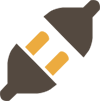

Themes Instructions
Select a Theme from the drop down menu
Table of Contents
- 1.Introduction
- 2.Theme Installation
- 3.How to Open Site Editor?
- 4.Blocks and Pattern
- 5.How to Edit Pattern Content?
- 6.List of Blocks and Pattern
- 7.How to create Custom Menu?
- 8.How to add Menu?
- 9.Duplicating the designs and sections for patterns having more than one column
- 10.How to set Homepage settings?
- 11.How to add Custom CSS?
- 1.Introduction
- 2.Theme Installation
- 3.How to Open Site Editor?
- 4.Blocks and Pattern
- 5.How to Edit Pattern Content?
- 6.List of Blocks and Pattern
- 7.How to create Custom Menu?
- 8.How to add Menu?
- 9.Duplicating the designs and sections for patterns having more than one column
- 10.How to set Homepage settings?
- 11.How to add Custom CSS?
Kelsey
Kelsey is our first free multipurpose dark WordPress Block Theme for Full Site Editing that comes with a beautiful design. This is a block-based theme that is suitable for all kinds of websites like portfolios, businesses, photography, corporate, and many more..
There are two approaches to installing the theme. You can either install it easily via the WordPress admin dashboard or Upload and install the theme through FTP client.
- Log in to the WordPress Administration Panels.
- Select the Appearance panel, then Themes.
- Select Add New.
- Type “Kelsey” in Search themes… box
- It will show Kelsey and click on it and Install. Once installation is complete you can activate it.
You can use FTP client like FileZilla to connect your web server.
- Download kelsey.zip to your Desktop.
- Unzip kelsey.zip to your Desktop.
- Using an FTP client to access your host web server, go to /wp-content/themes/ and upload your new copy of Kelsey Theme.
- Now, log into the WordPress Dashboard with your login details.
- Select the Appearance panel, then Themes.
- You will see the theme “Kelsey” in the list.
- Then click Activate button.
- Now the theme will be activated and go through the following options to set up the theme step-wise.
If you are on WordPress Dashboard then go to “Appearance -> Editor” to open the Site Editor.
If you are on Site Frontend then you will see WP Admin Bar on the top of the page, click on “Edit Site” to open the Site Editor.
Kelsey supports 4 different custom blocks in this theme i.e. Popup Video, Header-Search, Header Social, and Slider. Also, the theme comes with 25+ different block patterns, 18 Templates, and 10 Template Parts.
There are 3 ways you can add Blocks and Patterns to your website:
Drag and Drop
- Click on the “+” sign on the top bar to display Blocks and Pattern
- If you want to add Blocks click on Blocks, Scroll down and to find “FSE Blocks”, choose the block you wish to add
- If you want to add Patterns, Click on Pattern then choose “Kelsey” to find all the patterns provided by Kelsey
- Simply Drag and Drop your block/pattern to desired site area
- Make necessary changes
- Finally, Click “SAVE” to save changes
Top Tool Bar
- Click on “+” sign on the top bar to display Blocks and Pattern
- If you want to Block Scroll down and to find “Kelsey Blocks”, choose the block you wish to add
- If you want to add Patterns, Click on the pattern then choose Kelsey to find all the patterns provided by Kelsey
- Click on desired pattern to add
- Make necessary changes
- Finally, Click “SAVE” to save changes
Adding Directly
- Click on the “+” sign in the template or page to display patterns and blocks
- Then search for block or pattern in search bar
- Make necessary changes
- Finally, Click “SAVE” to save changes
First, click on the pattern content you wish to edit/customize
You can select the section/content in three ways
- Clicking on the section itself
- List View
- Footer Interface Bar
Once the section is selected you can edit its content or if you want to customize the section’ properties/options, click the three dots and select your desired action. Duplicate, Remove, Copy or Add the desired section before or after the current section.
Here is the list of Blocks and Patterns Kelsey:
- Hero Content
- CTA Horizontal
- Featured Content
- Header Media
- Services
- Footer contact info
- Footer Default
You can create your own custom menu in Kelsey. You can go to Navigation Block on the header Or Simply go to the “Template Editor -> Template Parts” and click on Template Parts with a header to edit the header navigation.
Here are steps to create Custom Menu:
Note: To avoid confusion, click on List View to edit or select menu
You can select a predefined menu in your header navigation block
- Go to Site Editor
- Click on Navigation from “List View”, then you will find the Navigation tool bar there you can click on “Select Menu” and select your predefined menu
- Click on Save to view changes
Duplicate section can be used if you want to add a similar section in your pattern.
For Example: If you want to add one more column in between your Featured Content Duplicate section can be used, as it will create a similar section and you can edit the content accordingly.
Duplicate section is a very easy step to add on particular sections in your pattern.
Select the column via ListView/Footer Interface, then click on three dots and select Duplicate then change the content accordingly
- Go to Settings -> Reading in the left sidebar of your site dashboard.
- Your latest posts: When you choose this option your homepage will display your latest posts. This option is used when you are creating a simple blog site. But if you want a static front page with custom sections then you need to go with the A static page (select below)” option.
- A static page (select below): When you choose this option, you will be able to select the page for your Homepage as well as the page to show your latest posts in Posts page. That is why you will get the following two options
- Homepage: Here you can select any page that you want to show on your homepage. Note: All the custom sections of homepage will only be visible on Homepage once you set a page for the Homepage Setting option.
- Posts page: Here you can select any page where you want to show all your latest posts
- Click Save Changes at the bottom of the page.



